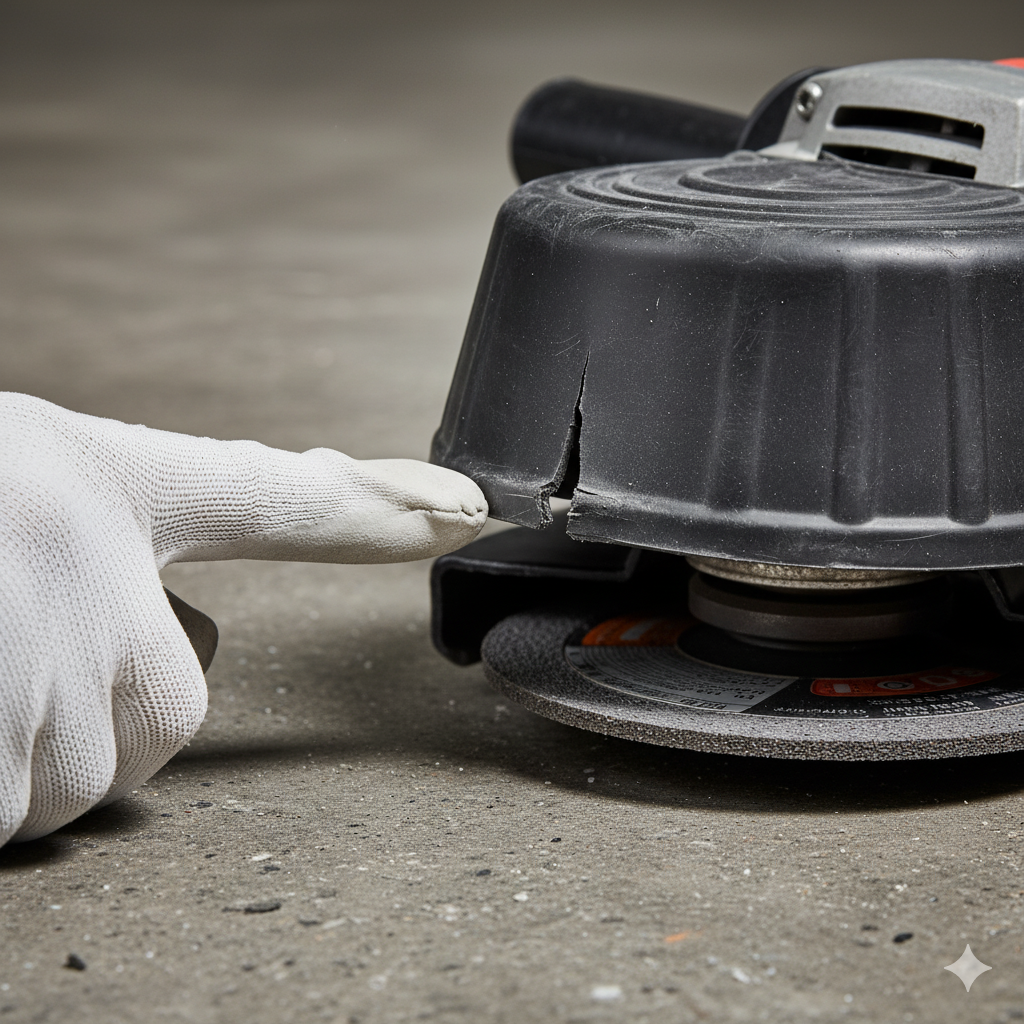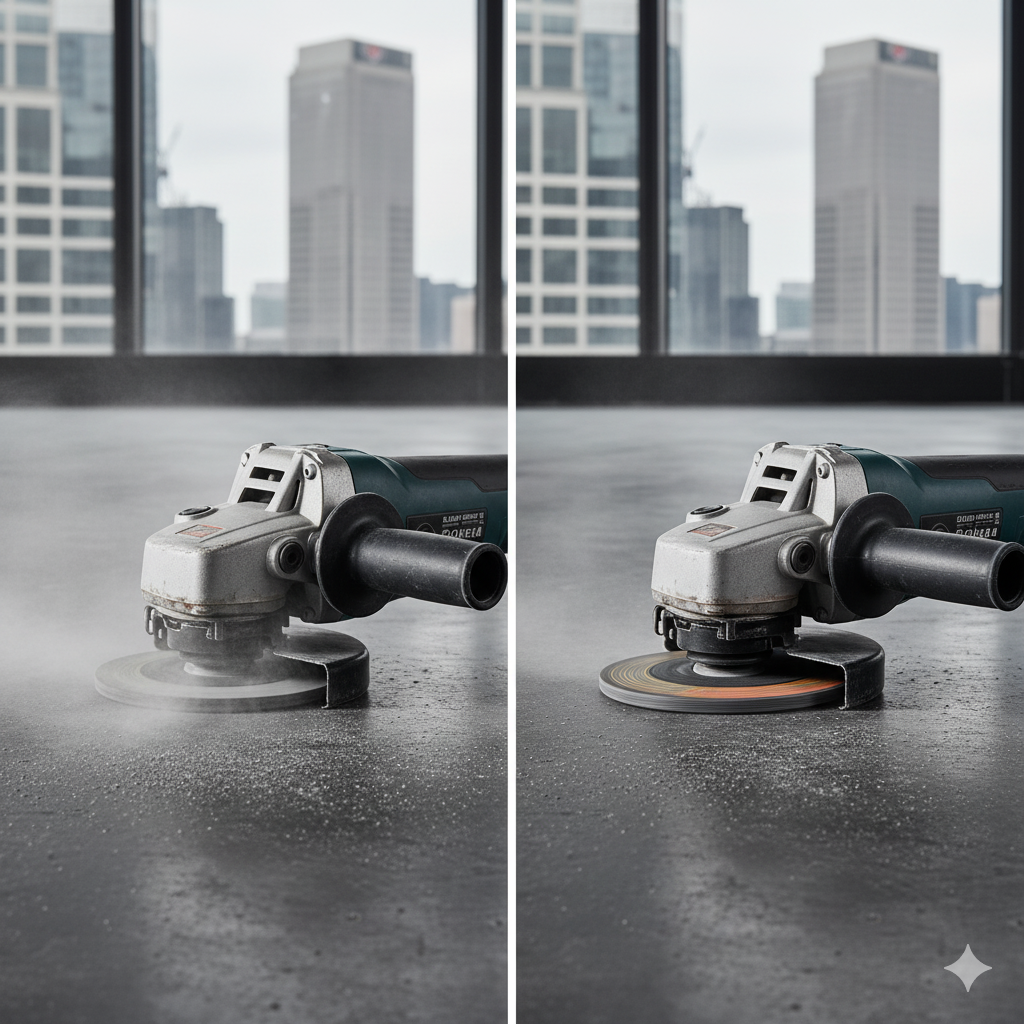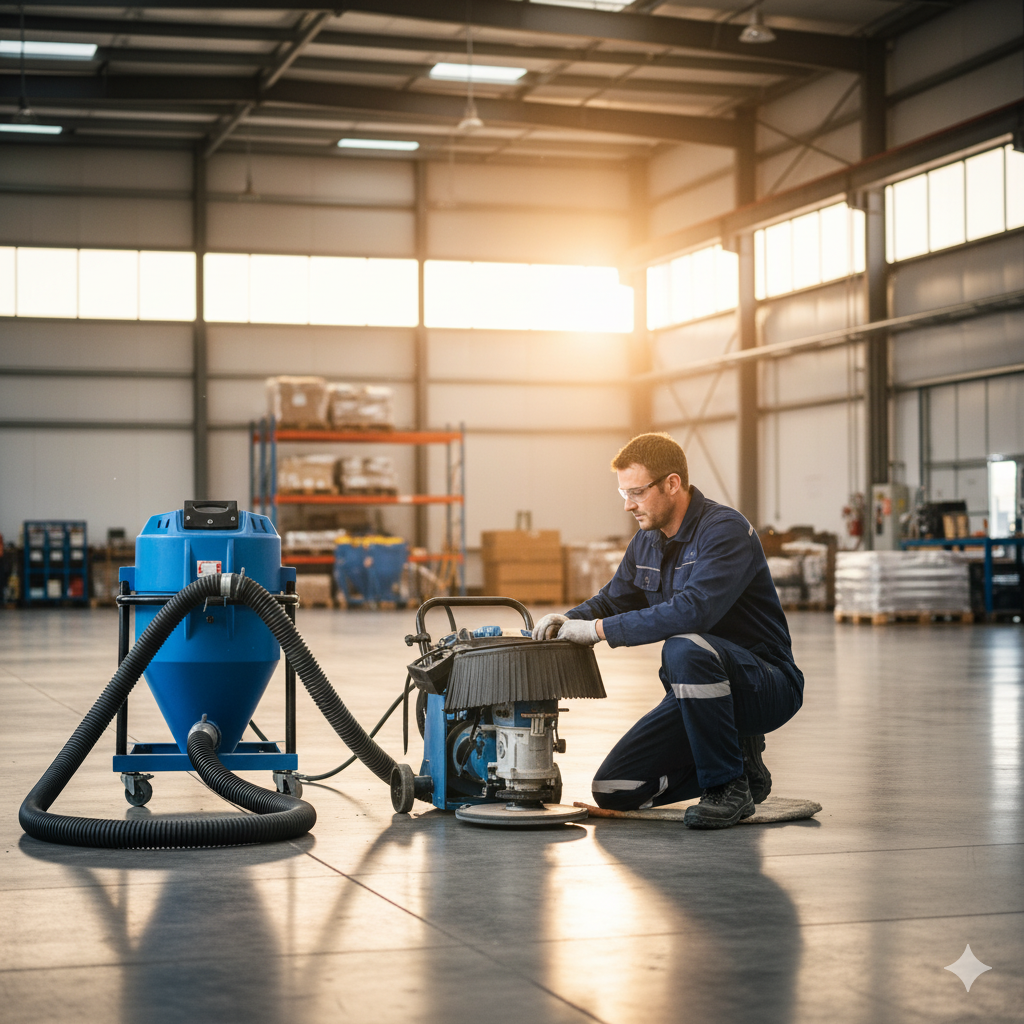By The Team at ElymentGroup | Optimising Dust Control for NSW Flooring Professionals.
In the flooring game across Sydney and the whole of NSW, clean air isn’t just a nicety—it’s the absolute standard. We’re talking about health, safety, and a finish that shines. But there’s one tiny, often overlooked component that can completely compromise your dust extraction system: the humble dust shroud.
Are you truly achieving max extraction efficiency on your grinding and polishing jobs? Or is silica dust silently leaking past that worn-out rubber skirt? Let’s have a sticky beak at why maintaining your dust shroud is non-negotiable for anyone serious about dustless flooring in Australia.

Why Dust Shrouds Are the Unsung Heroes of Dust Extraction
Think of the dust shroud—that flexible plastic or rubber skirt attached to your angle grinder or concrete grinder—as the frontline soldier against airborne silica dust. Its entire job is to create a perfect seal right where the dust is created (the source), ensuring your industrial vacuum sucks up the nasties before they escape.
When this seal is compromised, even a tiny tear or gap, you get what we call “leakage at the source.” This drastically reduces the suction power where it matters most, leading to:
- Increased Silica Dust Exposure: A major WHS concern in NSW and beyond.
- Poor Finish Quality: Dust settling back onto the surface, affecting coatings or polishing.
- Inefficient Workflows: More time spent on clean-up instead of getting the job done.
The Tell-Tale Signs Your Dust Shroud is a Goner
Worn-out dust shrouds are a common culprit for poor dust control in the flooring industry. They take a serious beating on tough Sydney worksites. So, how do you spot a failing shroud?
Tips on Inspecting Worn Dust Shrouds
- Check for Tears and Cracks: The flexible skirt is designed to hug the floor’s contours. Look for any visible rips, particularly near the edge or around the tool attachment point.
- Assess Flexibility & Hardening: Is the rubber or plastic brittle? Over time and with exposure to heat and grinding debris, the material can harden, losing its ability to create a tight, effective seal against the floor.
- Look for Excessive Wear: If one section is visibly thinner or worn down more than others, it’s not maintaining uniform contact. This is particularly common if the grinder is often tilted for edge work.
- The “Suction Test”: A quick check—if you turn on your extractor and can visibly see dust escaping around the shroud’s perimeter when the grinder is on the floor, you’ve got a leak, mate!

Simple Steps for Replacement and Maximum Suction
Don’t be a tight-arse when it comes to replacing a damaged shroud! It’s a small investment that pays massive dividends in efficiency and safety. Here’s a simple guide to getting it sorted:
Quick Replacement Guide for NSW Pros
Choosing the Right Skirt: Always opt for a quality, durable shroud designed for the specific size and model of your grinding tool. Polyurethane or high-grade rubber usually lasts longer.
- Step 1: Disconnect and Clean: Safely disconnect the power tool and clean the shroud mounting area thoroughly.
- Step 2: Remove the Old Shroud: This often involves releasing clips, screws, or simply peeling off the old rubber skirt.
- Step 3: Attach the New Shroud: Ensure the replacement is seated flush and securely fastened. No gaps! A secure fit is critical for preventing leakage at the source.
- Step 4: Test the Connection: Make sure the hose connection to the dust extractor is also firm. Every seal matters for max extraction efficiency.
Key Takeaways for Dustless Flooring
For your next high-spec flooring project in NSW, remember these points:
- Regular shroud inspection is critical for WHS compliance and quality finish.
- A compromised shroud means your entire dust extraction system is underperforming.
- Replacing a worn-out concrete grinder dust shroud is cheap and easy, but the cost of not replacing it is high (re-work, health risks).

Keep your gear in top nick, and your worksite will run smoother than a dolphin’s backside. For all your dust extraction and flooring prep needs, you know who to call.
Follow us on X for more expert tips: @ElymentGroup
